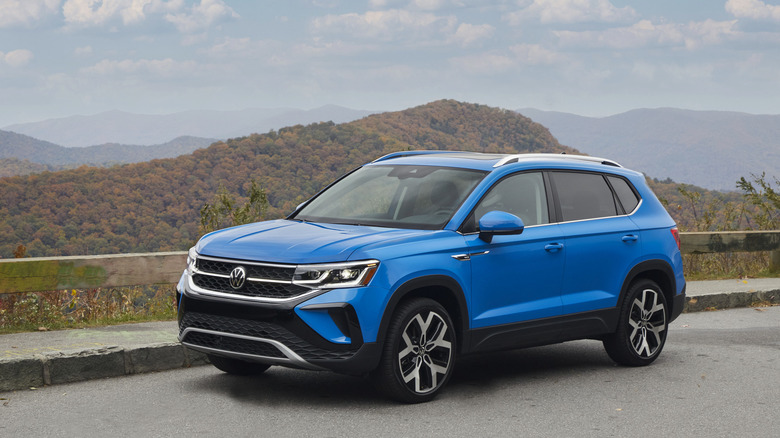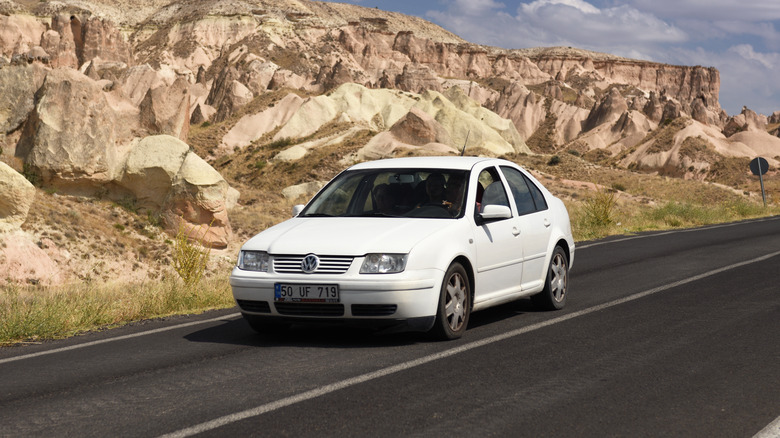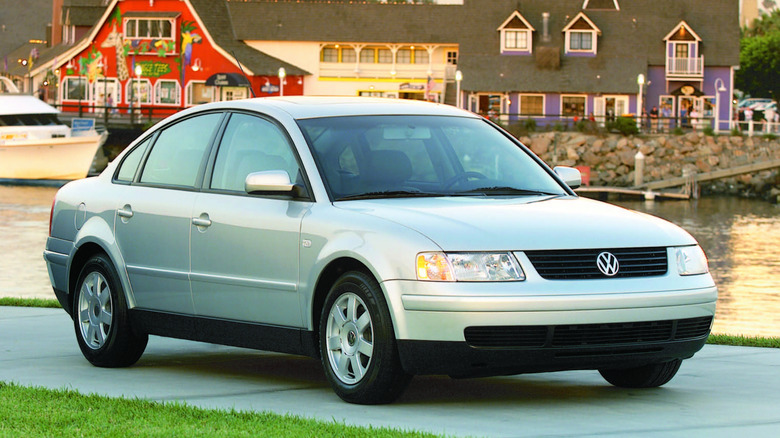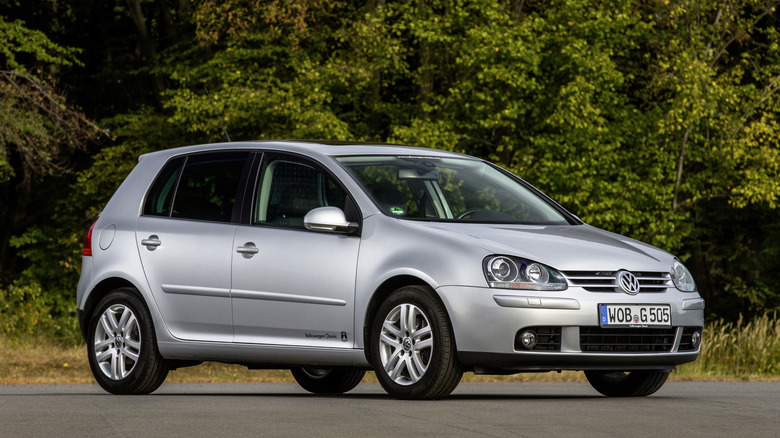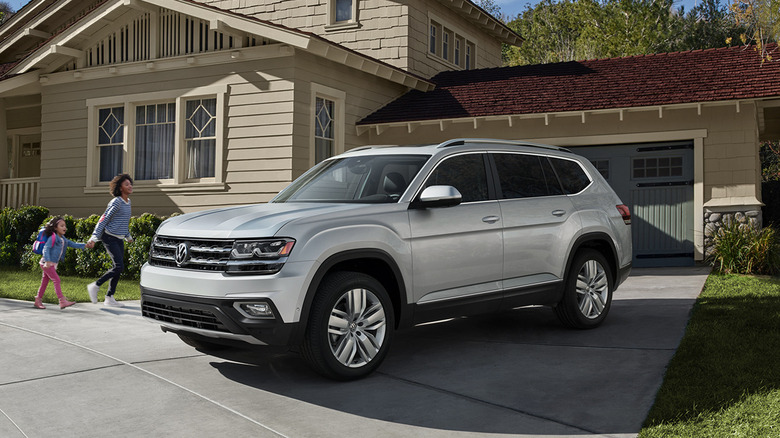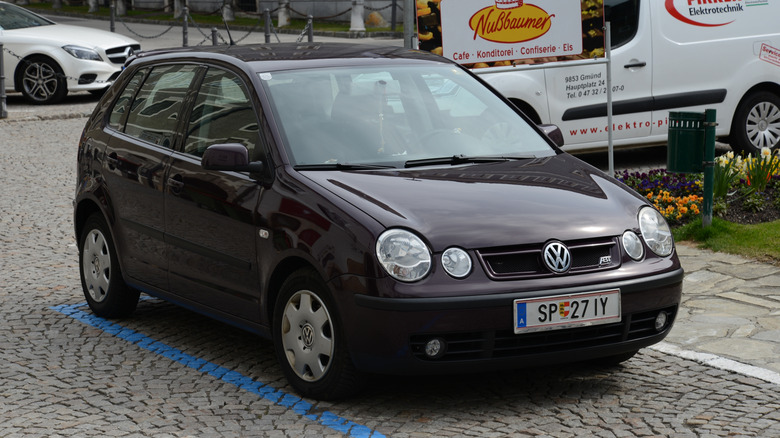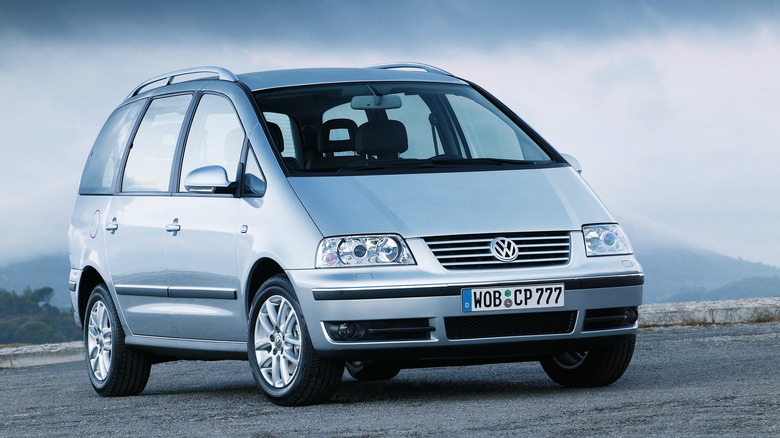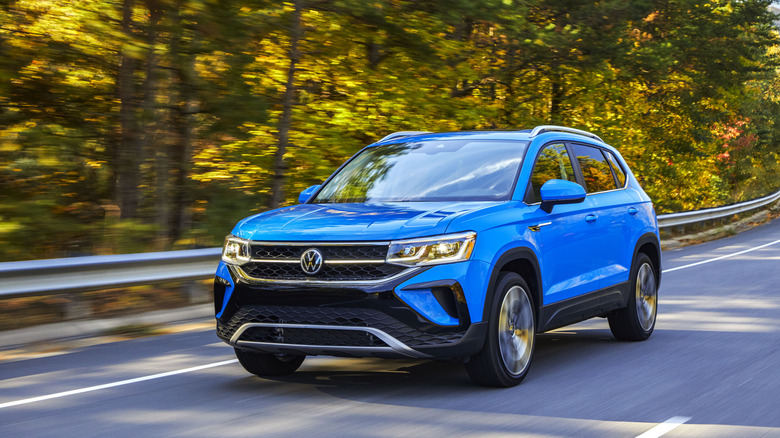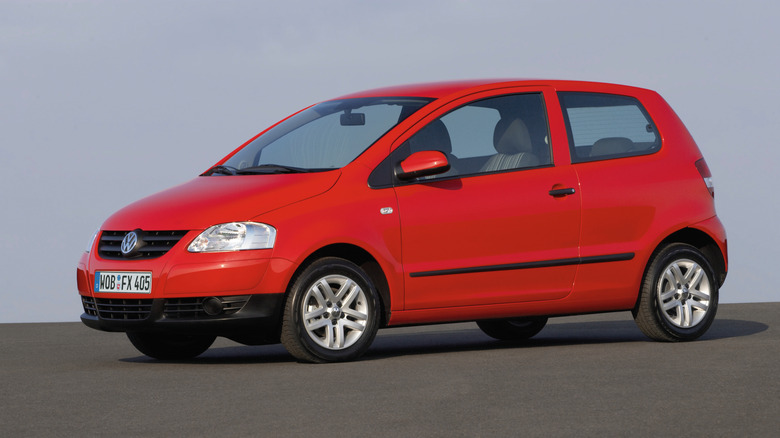8 Of The Most Boring Volkswagen Models Ever Designed
Some car makers are almost too well-known for brave, trendsetting designs that cannot possibly be mistaken for anything else. Think Hyundai's recent obsession with retrofuturism and pixels, or Lambo's unmistakable silhouette and the scissor doors on its flagship models. For some brands, breaking the design mold is the only way to go.
On the other end of the spectrum, there are those car makers who want to play things safe. While this is no longer the case nowadays, one automaker who has always been one to keep designs conservative is definitely Volkswagen.
While these cars are definitely not bad as cars, they're lacking in the styling department. Volkswagen has never really alienated its core audience with super bold, rule-bending designs. While there's nothing wrong with that philosophy, it has led to one unfortunate sound effect: Many VW models, both modern and historic, are just simply boring. Let's take a closer look at eight particularly dull examples, and see what makes them tick.
Volkswagen Jetta / Bora Mk4
The Volkswagen Golf turned 50 years old in 2024 — the car definitely needs no introduction. Early on in the Golf's life, VW also introduced a Golf-based compact sedan called the Jetta. This car ultimately went on to become the face of compact sedans in North America for a long time.
While we're not disputing the Jetta's capability as a car, the Mk4 Jetta is very unimaginative. It's basically just a simple three-box design, rectangular headlights, a normal grille, and normal taillights. If you were asked to describe a compact sedan to someone, it'd probably be hard to think of a single unique aspect.
Also known as the Bora in Europe, the Mk4 Jetta picked up the ball in most other areas. It was good to drive, well equipped, well made, and it offered some cracking powertrains, from the bulletproof 1.9 TDI (yes, even in North America), to the 2.8-liter VR6 — which wasn't really a V6 despite being called a V6 — to the oddball V5 (sadly unavailable in North America), to the 1.8 turbo four in the Jetta GLI. The latter spruced up the design a little bit, but it was still just a Jetta, at the end of the day.
Volkswagen Passat (B5)
As far as Eastern Europe and the Balkans are concerned, this is one of the best cars in the world. A byword for durability and a huge helping hand in getting that corner of Europe on four wheels, the B5 Volkswagen Passat arrived in 1998, with an entirely new platform, new styling, and improved powertrains.
Good though it may have been, the B5 Passat has one major issue: it doesn't really seem to have been styled. It's not an ugly car, far from it, but it does nothing to break the mold whatsoever. A very similar philosophy to the Jetta: rectangular headlights and taillights, a perfectly normal grille, and a typical three-box sedan shape.
The B5.5 facelift did its best to sprinkle a little more flair with its redesigned light groups and front grille, but the pre-facelift B5 is even more unimaginative. Still, the Passat had a lot to offer elsewhere. It was great to drive, super spacious and practical, and once again, there were tons of awesome powertrains on offer. All of the ones from the above-mentioned Jetta, of course, but also the lovably bizarre and exceedingly unreliable W8 in the flagship model.
Volkswagen Golf (Mk5)
By the early 2000s, Volkswagen had retired all of the Mk4 models and started taking the whole styling thing a little more seriously. This was clear in the Mk5 Golf, launched in 2003. Not only was it much larger than the outgoing Mk4, it was also a little more distinctive. Still a Golf, no doubt, but with a little more thought put into the design.
Great, right? Yes, but we have to look at it in context. In Europe, the Golf's main market, competitors were going absolutely wild with their designs. The eighth generation Honda Civic had its smattering of triangle motifs. The Renault Megane II had its slashed tailgate design. The Mk2 Ford Focus was an evolution of the already forward-thinking and distinctive Mk1.
In this group, the Mk5 Golf was pretty outclassed, but then it clawed back points in almost every other category. I should know, I owned one for three years. The driving experience wasn't quite as fun as the competitors, but it was comfortable and spacious, without any compromises in practicality or material quality. With powertrain options including the 1.9 TDI, easily one of the best diesel engines ever made by a European automaker, and a new 3.2-liter VR6, it was tough to go wrong there as well.
Volkswagen Atlas (Pre-Facelift)
After the second generation Touareg failed to make a dent on the U.S. market, Volkswagen set about developing a separate mid-size SUV that would appeal much more to the American buyer. The Touareg is still around in Europe and other markets, one of many VW models that North America doesn't get. However, North America's consolation prize comes in the form of the Atlas.
Introduced in 2017, the Atlas carries the flag for the German automaker's lineup in North America. With available three-row seating and a super tempting price tag, the Atlas is here to provide a market dominated by Asian brands a little more Euro.
While Volkswagen has improved the styling of the Atlas with the most recent facelift, and even added a swankier Cross Sport coupe version, the original Atlas was nothing to write home about. It was just a plain old SUV, with a couple of VW styling traits so you didn't mix it up with anything else. One cool thing about those early Atlas models is that they were available with a VR6 engine, so they have that going for it. Actually, the latest Atlas has quite a bit going for it.
Volkswagen Polo (Mk4)
Another Volkswagen model that's forbidden fruit for Americans. Introduced shortly after the original Mk1 Golf, it would make sense that the model that slots below it in the lineup would also be named after a ball game.
The second generation Polo was offered as a small three-door wagon, and how can you argue with that? Sadly, the Mk4 took on a much more conservative approach. Early Mk4 Polos and their double circle headlights actually looked rather odd, and when the brand decided to give it a facelift, the results didn't really improve things further.
While it didn't win many favors in terms of exterior design, especially when placed against its competitors, the Polo had the same philosophy as the Golf. As such, the car managed to claw back some points when it came to the other features it offered, and generally for being a much more grown-up B-segment hatchback.
Volkswagen Sharan (Mk1)
Until the late '90s rolled around, VW's minivans were based on the T series of vans. Nothing wrong with that, but eventually someone from the board decided that the brand really needed a more car-like option. Through a collaboration with Ford, VW got the Sharan and the very closely related Seat Alhambra.
Being that the Sharan came along in the late '90s and early 2000s, it had a lot of things in common with its VW contemporaries. Powertrains, interior design, and, of course, some dull looks.
The Mk1 Sharan didn't really do too much to bend the developing stigma that minivans were just dull vehicles in general. Admittedly, that was never the focus of the minivan at any point, but when Ford itself challenged that notion a few years later with its own S-MAX, it made the Sharan look that much more uninspired by comparison. The original Sharan also didn't have a sliding rear door, which didn't do it a lot of favors for practicality, but then again, most other European minivans didn't have sliding rear doors either. At least you could have it with a 2.8-liter VR6 and AWD.
Volkswagen Taos
Despite countless attempts, Volkswagen's iconic Golf never really struck much of a chord with American buyers. After the Mk7 went into retirement, VW changed the strategy: a crossover would take the place of the regular Golf in the lineup. After supplies of Mk7 Golfs ran out, if Americans wanted a Golf, they could have it, as long as it was a GTI or an R.
That Golf-replacing crossover came in the form of the Taos, a subcompact SUV exclusively offered in North America, representing the entry point into the VW lineup on the continent.
As we've made it clear, sharp styling has never really been Volkswagen's forte, and that's evident in the Taos. A recent facelift attempted to spice things up just a little bit, and while the Taos is now far from older VW models of years gone by, it's still nothing special. In a market where style is key and the competitors include the Ford Bronco Sport, the Hyundai Kona, and the Mazda CX-30, nothing special just doesn't cut it.
Volkswagen Fox
This was a bit of an odd one. Volkswagen's first city car, the Lupo, came along in the late 1990s and it was a pretty big success. It also spawned a forgotten, super frugal diesel-powered version. The cutesy styling and its insane frugality put Volkswagen on the map when it came to city cars. The Lupo's successor, unfortunately, didn't really hit the mark in the European market.
The VW Fox was built in Brazil and sold across Brazil and various Latin American countries, but also in Europe. In Europe, it would sit one spot below the Polo, but I'd say it sits a couple of spots below. It was absolutely built down to a price. Cheapish interior plastics, pretty spartan equipment levels, and only three small, not very powerful engines.
Oh, and it's also straight up boring. City cars in Europe somehow always find ways to look cutesy and have even the littlest bit of design character, but that's certainly not the case with the Fox. It just looks like the designers put together an exterior so the car wouldn't be rolling around as a bare chassis. Mercifully, VW realized the error of its ways and replaced the Fox with the far, far better up! and its siblings.
